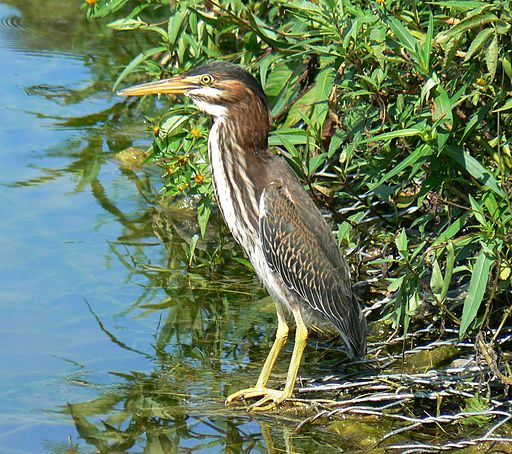Green Heron
Butorides virescens
Written by Kathy Richards and edited by Chris Coyle
Started a slow decline starting in the 1900s most likely due to many wetlands being filled in.
HABITAT:
Washington and Oregon through much of the southwestern United States. Most of New England except extreme northern New Hampshire and central and northern Maine. It doesn’t breed much in New England. Green Herons are found in freshwater and saltwater wetlands. They prefer shrub forested wetlands, including beaver ponds, marshes, or brushy areas along slow-moving rivers. They need shallow water.
BEHAVIOR:
If excited, it will elevate the crest on top of its head. It is a wading bird, hunting in shallow wetlands. It will sometimes dive for food. It has the ability to remain motionless as a fishing technique and to escape enemies. Typically, it will fish from a perch (a downed log, stick or a rock) a few inches above the water. When a fish or frog comes by, the heron strikes lightning fast with its dagger-like bill. It will also slowly wade through the water lifting one foot slowly at a time.
NESTING:
Unlike other birds, the Green Heron does not nest in colonies. It builds its nest in a variety of locations from high in the tree tops to bushes or on the ground. The nest is usually in the woods but near water. The eggs are laid between early May to mid-June.
FOOD:
Small fish, crustaceans, frogs, insects (both terrestrial and aquatic), reptiles, amphibians, spiders, leeches, and mollusks.
PREDATORS:
Snakes, crows, and common grackles may eat the eggs. Raccoons eat nestlings. Adult birds may be preyed on by large birds of prey.

